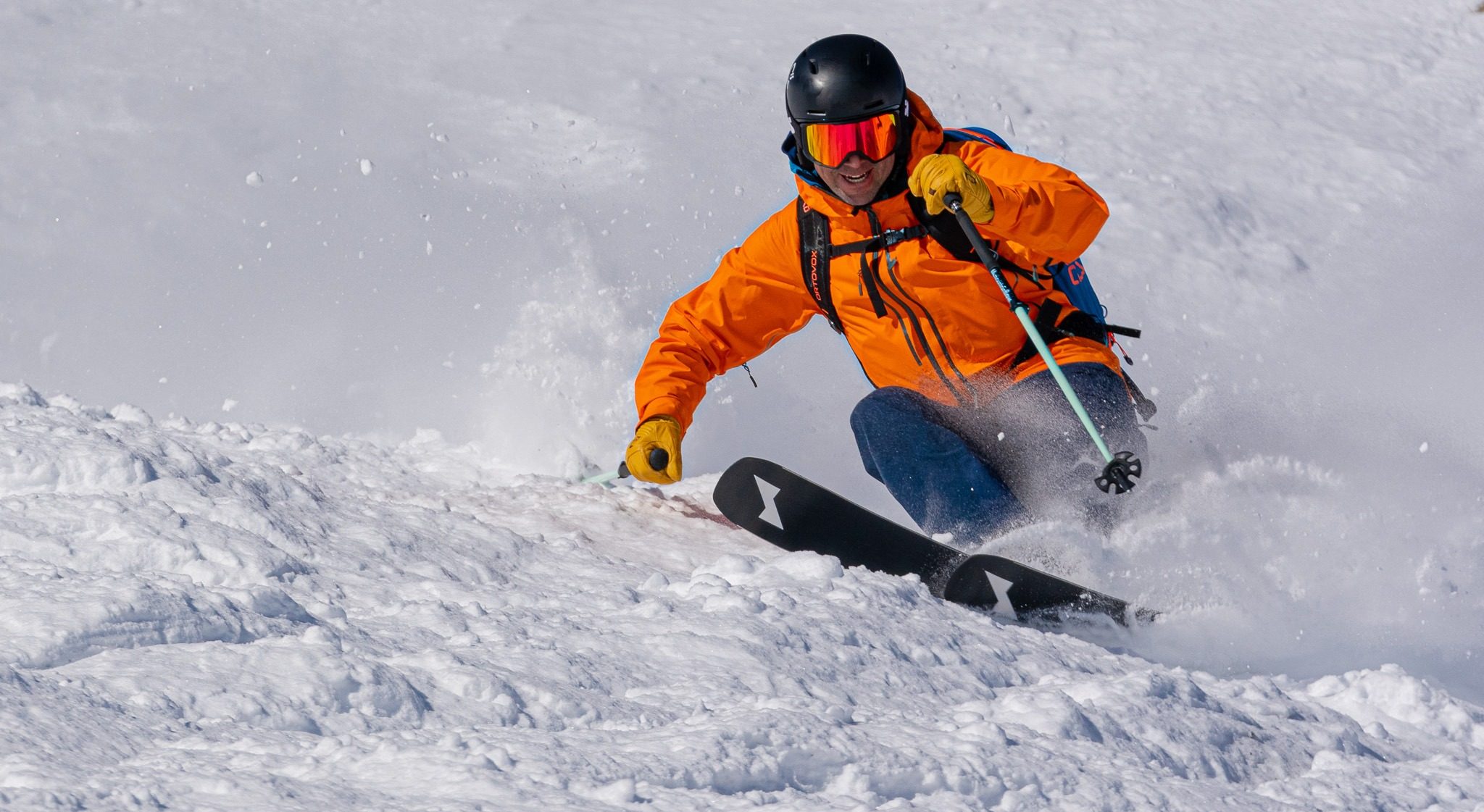
Brought to you by Peak Skis and Scarpa North America
Spring is officially here, and ski season is almost over, right? Wrong! April and May can be the best months of the year to head into the backcountry. The weather is warm, the days are long, terrain is filled in, and the avalanche hazard is more manageable. Whether you’re a backcountry pro chasing big lines or heading out on your very first tour, there’s no time like spring to make it happen.
We recently caught up with skiing legend Chris Davenport (Peak Skis/Scarpa) to hear his top five tips for backcountry skiing. Chris is a two-time World Champion and is regarded as one of the premier big mountain skiers in the world today. In 2007 Chris became the first person to ski all of Colorado’s 14,000-foot peaks in less than one year. He’s pioneered numerous first descents around the globe and recently guided and skied on Mt. Everest. Chris has also been featured in over thirty ski films by Warren Miller and Matchstick Productions. There’s really no one better to ask!
1. Know Before You Go!
Watch these videos and follow these rules: Get the Forecast, Get the Training, Get the Gear, and Get the Picture. Chris told us, “I’m a big fan of this campaign and believe every winter backcountry user should spend time understanding these important safety elements.”
2. Use proper skinning techniques
If you hate the uphill, you’ll never love backcountry skiing. Good skinning technique can make all the difference.
- Don’t lift your feet while skinning; keep your skins and weight on the snow.
- Keep your chest up for better grip on your skins; don’t hunch over and put extra weight on your arms.
- If you are setting a skin track, keep it mellow. Steep skin tracks suck and tire people out. The 12-13 degree skin tracks are ideal.
- Don’t draft your buddy. Give them some space and spread your group out.
- Be conscious of your breath and find a rhythm like you would while biking or running.
- Try for a no-sweating pace; it sucks to arrive at the top soaking wet!
Follow these pointers from Chris, and your legs will thank you hours later!

3. Snacks, Snacks, Snacks!
Keep the fuel tank topped up and keep the calories coming in! Davenport says, “I’m a big fan of snacking every 45 minutes. I carry a variety of snacks, from Clif Bars and Bloks to a couple of gels and a sandwich. I also love making rice cakes, waffles, and energy balls from Dr. Alan Lim’s Feedzone Portables book“
4. Go into the backcountry with a goal for the day
It’s great to set goals, but always remember to remain flexible and definitely have plans B and C in your back pocket. Chris reminded us, “There is no shame in stopping or turning around if red flags present themselves or group members have issues like fatigue or blisters. I love keeping my expectations low and then being stoked because the day exceeded them.”
5. Build out an epic tool and repair kit
Breaking gear in the backcountry is no fun, so Chris carries all the essentials, from ski and boot repair items and spare parts to skin and ski wax. Here are some of the items in his small, fold-open backcountry tool kit:
- Multi-tool
- Ratcheting multi-head screwdriver
- Cloth and duct tape
- Baling wire
- Zip ties
- 4-5 extra Voile style ski straps
- Lighter and fire-starter
- Boot buckle Allen wrench
- Extra pole basket
- Plastic scraper
- Headlamp with batteries stored together.
- Skin wax
- Ski base wax
- Snow block/cornice cutting cord
- Emergency energy gels
- Hand warmers
- Noso Patches
- A hose clamp or two
- A well-appointed medical kit with a focus on wound and skin care (blisters)
Keep these tips in mind and have safer, more enjoyable days on backcountry ski missions this spring.